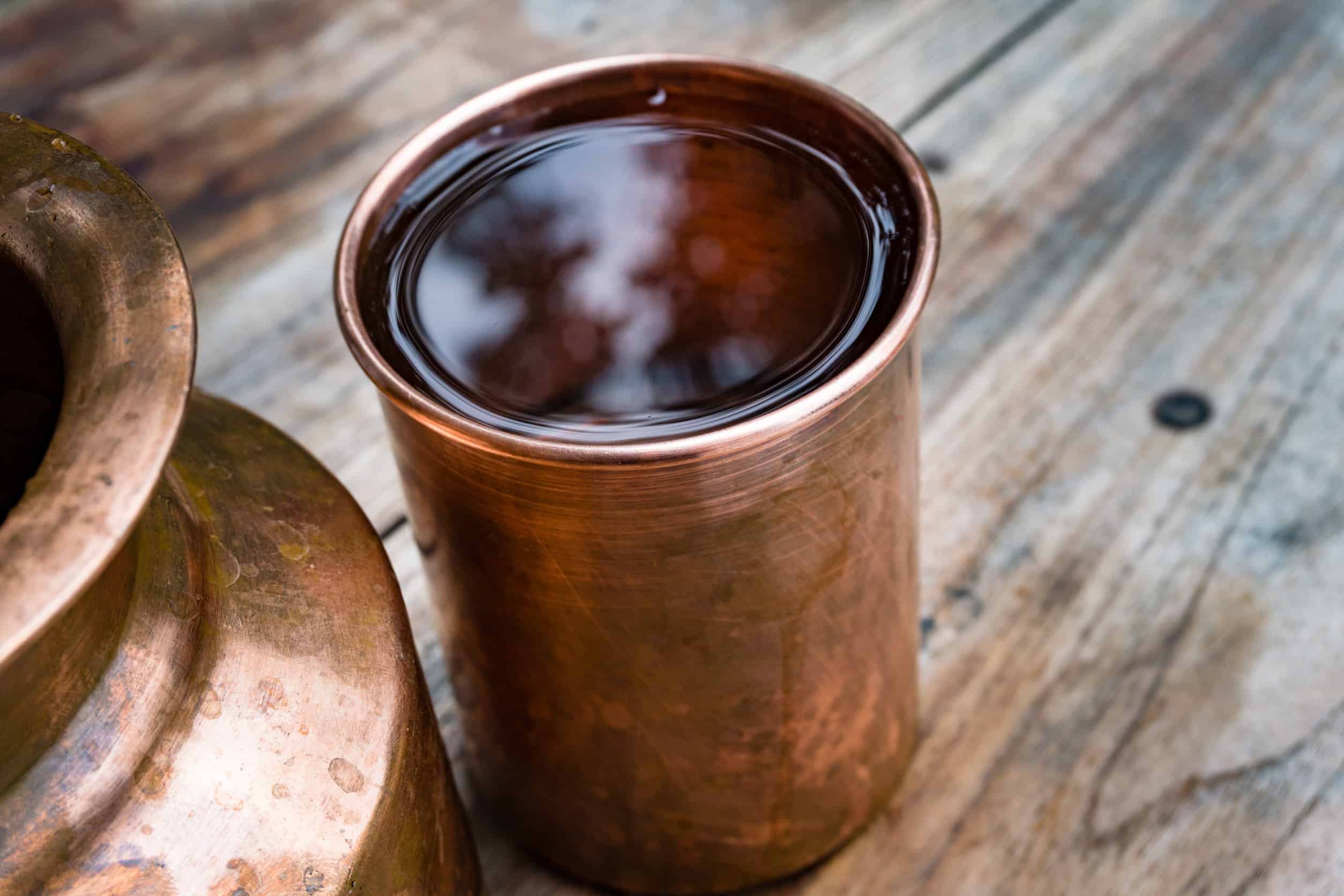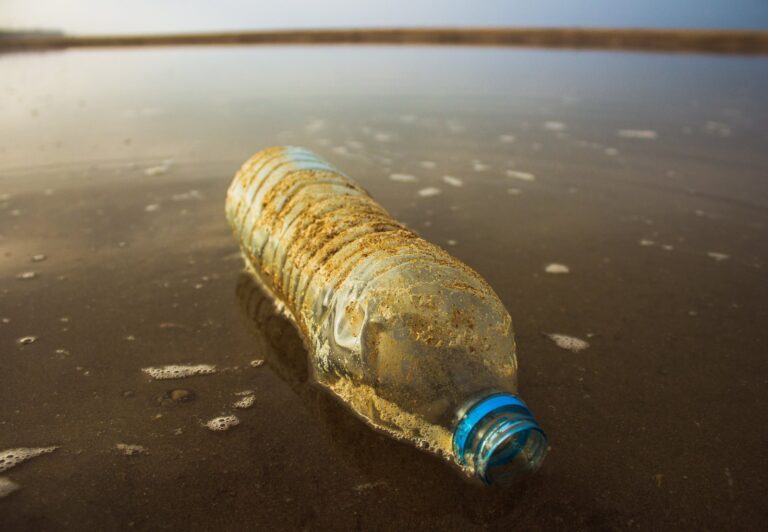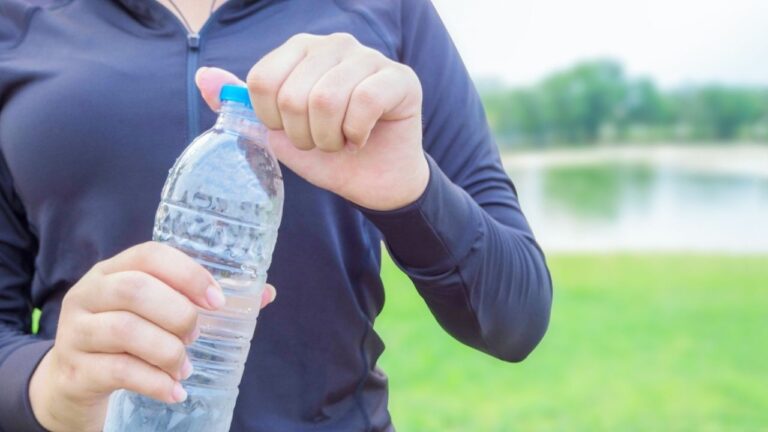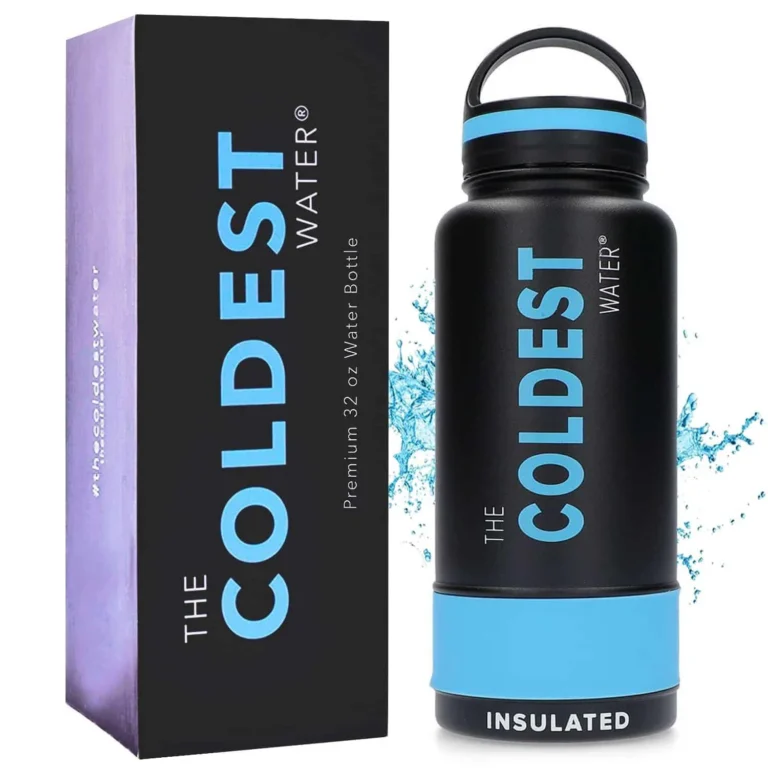Have you recently switched to drinking from a copper water bottle for its various health benefits? Are you aware that copper water bottle poisoning is a real concern? In recent years, the trend of using copper bottles to store and consume drinking water has gained popularity due to its purported health benefits. However, while copper is an essential nutrient for our bodies, excessive consumption of this metal can lead to toxicity. In this blog post, we will explore the potential dangers of using copper water bottles and how to stay safe while reaping its benefits.
Explanation of Copper Water Bottles
Copper water bottles have gained popularity in recent years as people are looking for alternatives to plastic bottles. These bottles are made from pure copper, which is a natural metal known for its heat and electrical conductivity. Copper utensils, including water bottles, have been used in India for centuries due to their health benefits.
When water is stored in a copper bottle for up to 8 hours, it undergoes an oligodynamic effect, which means it gains the ability to kill disease-causing bacteria, fungi, and viruses. Copper water has antimicrobial properties and can help in eliminating these harmful microbes. Additionally, copper water has medicinal properties that can boost the immune system and aid in the overall health of the body.
Drinking water from a copper bottle can have various health benefits, such as combating free radicals, regulating thyroid function, improving blood circulation, aiding in the production of hemoglobin, maintaining blood pressure, and even promoting weight loss. However, it is essential to choose a pure copper bottle and follow proper maintenance and cleaning instructions to avoid any potential risks.
In conclusion, copper water bottles offer a natural and eco-friendly alternative to plastic bottles and have several health benefits. By using a copper water bottle, you can enjoy the therapeutic properties of copper and contribute to reducing plastic waste.
Overview of Copper Poisoning
Copper poisoning is a serious issue that can arise from excessive consumption of copper. Copper, while an essential mineral for our body, can become toxic if consumed in large amounts. When it comes to copper water bottles, there have been concerns about their potential to cause harm to the liver and kidneys. It is said that drinking water from these bottles can lead to symptoms like nausea, vomiting, and diarrhea, which can be attributed to copper toxicity.
The amount of copper that is considered safe for consumption through drinking water from a copper bottle is around 1.3 milligrams per day. However, some studies have shown that certain copper water bottles on the market release more copper than this amount, especially if they are not cleaned and maintained properly. The World Health Organization has set a maximum acceptable concentration of copper in drinking water at 2 milligrams per liter.
To prevent the potential harm that copper bottles could cause, it is recommended to limit daily copper intake and avoid relying solely on copper bottles for drinking water. Regular cleaning of these bottles is also advised to prevent the accumulation of copper oxide, which can increase copper levels in the water.
While there may be potential health benefits to drinking water from copper bottles, it is crucial to be aware of the risks of copper toxicity and take necessary precautions to ensure the safety of your liver and kidneys.
Copper Poisoning in Water Bottles
A. The Risks of Using Copper Water Bottles
Copper water bottles have gained popularity in recent years due to the perceived health benefits they offer. However, there are risks associated with using these bottles that should be taken into consideration. One of the main concerns is that excessive consumption of water from copper bottles can lead to symptoms such as nausea, vomiting, and diarrhea. These symptoms may be attributed to copper toxicity, which can cause damage to the liver and kidneys if left untreated. It is important to note that the amount of copper that can be safely consumed through drinking water from a copper bottle is around 1.3 milligrams per day. Many copper water bottles on the market today release more copper than this amount, especially if they are not properly cleaned and maintained. To prevent potential harm, experts recommend limiting daily intake of copper and avoiding using copper bottles as the sole source of drinking water. Regular cleaning of copper bottles is also crucial to prevent the accumulation of copper oxide, which can increase copper levels in the water. While there may be potential health benefits to drinking water from copper bottles, it is essential to be aware of the risks and take necessary precautions to avoid copper toxicity.
B. How Copper Can Leach into Water
Copper can leach into water when it comes into contact with copper vessels or pipes. This is especially true if the water is stored in these vessels for a prolonged period of time, such as overnight. When water is stored in a copper water bottle or vessel, it undergoes an oligodynamic effect, which means it gains the ability to kill certain infection-causing microbes and maintain natural pH levels. Studies have shown that certain copper alloys have the ability to kill 99.9% of disease-causing bacteria within just 2 hours. This is why copper-coated surfaces are used in hospitals to reduce the transfer of contagious diseases. However, it’s important to note that copper water bottles should be made from high-quality, food-grade copper and should not be used to store acidic substances, as this can cause excessive leaching of copper into the water. Proper cleaning and maintenance of copper water bottles is also important to ensure its safety. Overall, while copper can leach into water, when used properly, copper water bottles can provide various health benefits.
C. Symptoms of Copper Poisoning
Copper poisoning can have various symptoms that can range from mild to severe. When excessive amounts of copper are ingested, symptoms such as nausea, abdominal pain, and vomiting may arise. In some cases, individuals may experience a metallic taste in their mouth. If copper toxicity occurs, more serious symptoms may develop, including yellowing of the eyes and skin (jaundice), brown ring-shaped markings in the eyes (Kayser-Fleischer rings), and neurological and behavioral symptoms like over-excitement and feeling overwhelmed. Prolonged exposure to excessive copper levels can lead to kidney conditions, liver damage or failure, heart failure, and brain damage. It’s important to note that properly stored copper water cannot cause copper toxicity, but it can still contribute to an increase in copper levels in the body. If you experience any of these symptoms, it is crucial to consult a healthcare professional for proper evaluation and guidance.
D. Risks for Vulnerable Populations
Risks for Vulnerable Populations: Copper water bottles may pose a greater risk for certain vulnerable populations. Infants, young children, pregnant women, and individuals with liver or kidney disease are at a higher risk of copper toxicity. Infants and young children have developing organ systems that are more susceptible to the harmful effects of excess copper. Pregnant women also need to be cautious because copper can cross the placenta and potentially harm the developing fetus. Individuals with liver or kidney disease may have impaired copper metabolism, leading to a buildup of copper in the body. This can result in further liver or kidney damage if left untreated. It is important for individuals in these vulnerable populations to consult with a healthcare professional before using copper water bottles. They may need to limit their intake or seek alternative drinking water options to avoid potential health risks.
How to Prevent Copper Poisoning from Water Bottles
A. Choosing Safe Copper Water Bottles
When it comes to choosing safe copper water bottles, there are a few important factors to consider. First and foremost, it’s crucial to ensure that the bottle is made from pure copper. Look for certifications or labels that guarantee the purity of the metal. This is because using copper that has been contaminated with other metals or chemicals can pose health risks.
Additionally, it’s important to be mindful of the maintenance and cleaning of the copper water bottle. Proper cleaning and maintenance are essential for preventing the buildup of harmful bacteria or toxins. Use a mild detergent and a soft cloth to clean the bottle regularly, and avoid using abrasive materials that could scratch the surface.
Furthermore, it’s advisable to choose copper water bottles that have a protective lining on the inside. This lining acts as a barrier between the copper and the water, preventing excessive copper from leaching into the water. Look for bottles that explicitly mention the presence of a protective lining.
Finally, it’s recommended to follow the guidelines for drinking copper water. Ideally, water should be stored in the copper bottle for no more than 8 hours to minimize the risk of excessive copper leaching. It’s also important to avoid storing acidic beverages in the copper bottle, as they can increase the leaching of copper.
By considering these factors and choosing a safe copper water bottle, you can enjoy the potential health benefits of copper without risking copper poisoning or other health issues.
Cleaning and Maintaining Copper Water Bottles Properly
When it comes to cleaning and maintaining copper water bottles, there are a few simple steps that you can follow to ensure their longevity and effectiveness. One method is to use a mixture of salt and vinegar or lemon juice to clean the outside of the bottle. Simply mix one spoon of salt with two spoons of vinegar or lemon juice, let the mixture settle, and then gently rub it on the outside of the bottle using a cotton cloth or ball. Rinse the mixture thoroughly and wipe dry with a clean cloth to avoid any stains. Another option is to use baking soda with lemon or vinegar. Mix a small amount of baking soda with lemon or vinegar, rub the mixture on the outside of the bottle, rinse thoroughly, and store in a cool place. To clean the inside of the bottle, you can use the same salt and lemon or vinegar mixture and shake it vigorously. Alternatively, you can use tamarind paste to clean both the outside and inside of the bottle. Apply the tamarind paste on the outside, let it dry, wash with water, and then fill the bottle with a mixture of tamarind and water, shake it, and rinse. It’s important to regularly clean and maintain your copper water bottle to ensure its hygiene and optimal performance.
C. Alternatives to Copper Water Bottles
Copper water bottles have gained popularity in recent years for their potential health benefits and antibacterial properties. However, some people may have concerns about using copper water bottles, especially if they are worried about copper poisoning. Fortunately, there are alternatives available for those who want to avoid using copper water bottles.
One alternative to copper water bottles is stainless steel water bottles. Stainless steel is a durable and safe material that does not leach any harmful substances into the water. It is also easy to clean and maintain.
Glass water bottles are another alternative to copper. Glass is a non-reactive material that does not affect the taste or quality of the water. It is also a sustainable choice and can be reused.
For those who prefer a more eco-friendly option, there are also bamboo water bottles available. Bamboo is a renewable resource and can be a great alternative to plastic or copper.
In conclusion, while copper water bottles may have their benefits, it is important to consider alternatives if you have concerns about potential copper poisoning. Stainless steel, glass, and bamboo water bottles are all safe options that can provide the same convenience and hydration without the risks associated with copper.
Can copper water bottle make you sick?
Copper water bottles have gained popularity in recent years as a trendy and eco-friendly alternative to plastic bottles. However, there is growing concern about the potential health risks associated with using these containers. So, can a copper water bottle make you sick?
While copper is an essential mineral for our bodies, it is also a heavy metal that can be toxic in high concentrations. Drinking water stored in copper bottles can cause copper to leach into the water, especially if the water is acidic or if the bottle is not properly coated or lined on the inside.
The side effects of drinking water contaminated with excessive copper can vary from person to person. Some individuals may experience gastrointestinal symptoms such as nausea, vomiting, or stomach cramps. Long-term exposure to high copper levels may lead to more serious health issues, including liver damage, kidney problems, and even neurological disorders.
To avoid the risk of copper poisoning, it is important to choose copper water bottles that are specifically designed for drinking water. These bottles should have an interior lining made of stainless steel or a food-grade coating that prevents the copper from coming into direct contact with the water.
Proper cleaning and maintenance of copper water bottles are also crucial in preventing copper leaching. Regularly wash them with warm water and mild soap, and avoid using abrasive cleaners that could damage the interior lining.
If you are concerned about the potential risks of copper water bottles, there are alternative options available. Stainless steel or glass bottles are excellent choices, as they do not pose these same risks. Furthermore, they are easy to clean and maintain.
What are the side effects of drinking copper water?
Drinking water from copper bottles has gained popularity due to the perceived health benefits associated with copper. However, it is important to be aware of the potential side effects of drinking copper water. Excessive consumption of copper water can lead to symptoms such as nausea, vomiting, and diarrhea. These symptoms may be a result of copper toxicity, which can cause damage to the liver and kidneys if left untreated.
Experts suggest that the safe amount of copper consumption through drinking water from copper bottles is around 1.3 milligrams per day. However, many copper water bottles on the market today release more copper than this recommended amount, especially if they are not properly cleaned and maintained. The World Health Organization has set a maximum acceptable concentration of copper in drinking water at 2 milligrams per litre. Some studies have shown that copper levels in water from copper bottles can exceed this limit, particularly if the water is left in the bottle for an extended period of time.
To avoid the potential harm of copper bottles, it is recommended to limit daily intake of copper and not rely solely on copper bottles as the sole source of drinking water. Properly cleaning and maintaining copper bottles is also crucial to prevent the accumulation of copper oxide, which can increase the levels of copper in the water. While there may be potential health benefits of drinking water from copper bottles, it is important to take necessary precautions to avoid any negative effects on the liver and kidneys.
Does copper water affect kidneys?
Copper water has been gaining popularity in recent years for its perceived health benefits. However, there are concerns about its potential impact on kidney health. Excessive consumption of water from copper bottles can lead to copper toxicity, which can cause symptoms such as nausea, vomiting, and diarrhea. If left untreated, copper toxicity can result in liver and kidney damage. It is important to note that the amount of copper that can be safely consumed through drinking water from a copper bottle is around 1.3 milligrams per day. Many copper water bottles on the market today release more copper than this amount, especially if they are not properly cleaned and maintained. To prevent potential harm, it is recommended to limit daily intake of copper and avoid using copper bottles as the sole source of drinking water. Regularly cleaning copper bottles is also advised to prevent the accumulation of copper oxide, which can increase the levels of copper in the water. While drinking water from copper bottles may have potential health benefits, it is crucial to be aware of the potential risks and take necessary precautions to avoid any harm to the kidneys and other vital organs.
How much copper is toxic?
Copper is an essential mineral that our bodies need in small amounts to support various bodily functions. However, excessive intake of copper can be toxic and cause harm to the liver and kidneys. So, how much copper is actually toxic?
According to experts, the maximum acceptable concentration of copper in drinking water, as set by the World Health Organization (WHO), is 2 milligrams per liter. Consuming more than this amount can potentially lead to copper toxicity.
It’s important to note that copper water bottles on the market today may release more copper than the safe limit, especially if they are not properly cleaned and maintained. Additionally, the amount of copper ingested through drinking water from a copper bottle can vary depending on the quality of the bottle and the length of time the water is stored in it.
To prevent the potential harm of copper toxicity, experts recommend limiting daily intake of copper and avoiding using copper bottles as the sole source of drinking water. It is also crucial to properly clean and maintain copper bottles to prevent the accumulation of copper oxide, which can increase copper levels in the water. By taking these precautions, individuals can enjoy the potential health benefits of copper water while minimizing the risks of copper poisoning.
How long can we drink copper water?
Drinking water from copper bottles has become a popular health trend in recent years due to the numerous health benefits associated with it. However, it is important to consume copper water in moderation and for a limited duration. Experts recommend drinking water from copper bottles for a period of two to three months, followed by a break of at least one month. This allows the body to flush out any excess copper that may have accumulated. The World Health Organization (WHO) has set a daily upper limit of 10mg of copper intake. Therefore, it is crucial not to exceed this limit to avoid potential copper toxicity. Additionally, it is advised not to store water in copper bottles for more than three to six hours, as prolonged storage can increase the leaching of copper into the water. By following these guidelines, individuals can safely enjoy the health benefits of drinking copper water without any adverse effects.




